#Toxic Plants
Explore tagged Tumblr posts
Text
A reminder for those of us with cats at Easter that lilies of ANY kind are BAD for cats. Some species such as Calla, Peace and Peruvian do not cause kidney damage or death like Easter and daylilies, but they can still cause irritation and gastrointestinal issues if ingested...
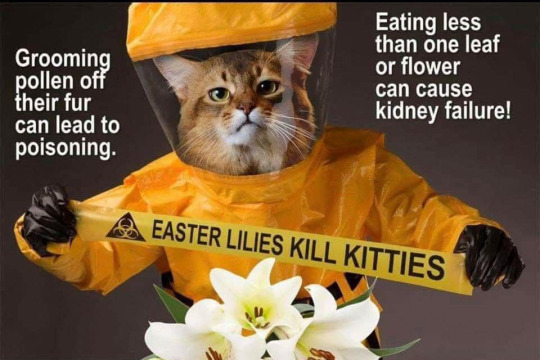
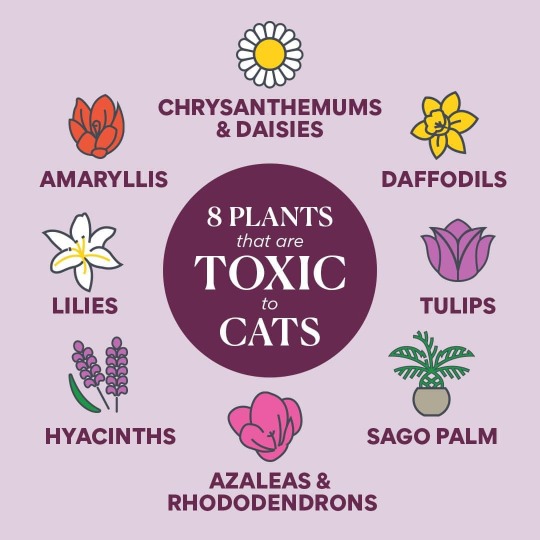
#easter lilies kill cats#toxic plants#just say no to lilies#catproofing#cats#kitties#kitten#cats of tumblr#cats of the internet#cats of instagram#daily-cats#mostlycatsmostly#animal safety#Easter#meow#purr#gato#chat#psa#awareness boost#kitty
21K notes
·
View notes
Text
Wild rabbits eat belladonna on purpose as self-defense to poison predators. Wild rabbits who live in the same areas as belladonna’s natural growing range are immune to belladonna’s deadly alkaloids because they produce an enzyme called atropinesterase that breaks down the atropine in the belladonna they ingest. The darker the rabbit’s fur, the more poisonous it may be.
Source
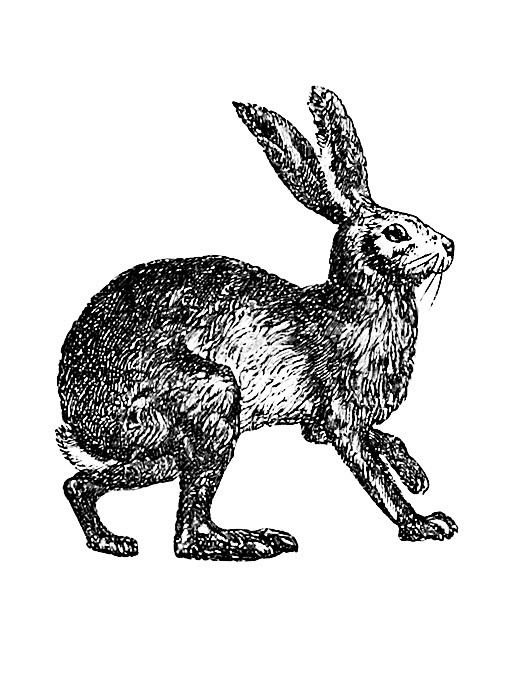
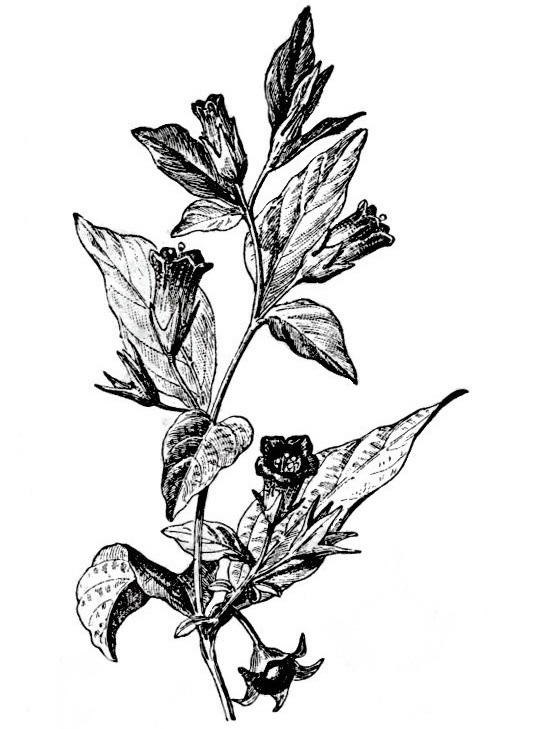
1K notes
·
View notes
Text
common toxic plants
[long post; updated 12.8.24]
this is not a complete list by any means, but these commonly noted plants, herbs, and flowers should be handled with care or avoided altogether.
aconite (wolfsbane, monkshood) - all parts: dermatoxic, hepatotoxic, and neurotoxic
adam and eve (jack-in-the-pulpit, wild arum) - root: dermatoxic and gastrotoxic if ingested
african sumac - leaves: dermatoxic; possibly fatal
agave - juice: dermatoxic
angel’s trumpet - all parts: cardiotoxic; often fatal
apple - seeds: cytotoxic in large doses
apricot - leaves and seeds: cytotoxic in large doses
arnica - gastrotoxic
asparagus - berries: dermatoxic and gastrotoxic if ingested
azalea - all parts: cytotoxic and neurotoxic; rarely fatal
betel nut palm (pinyang) - all parts: gastrotoxic if ingested
bittersweet nightshade - all parts: neurotoxic and gastrotoxic; rarely fatal
black hellebore - all parts: cardiotoxic and gastrotoxic; possibly fatal
black locust (false acacia) - root bark and flowers: gastrotoxic
black nightshade - all parts except ripe fruit: neurotoxic and gastrotoxic; possibly fatal
bleeding heart - leaves and roots: neurotoxic
bloodroot - rhizomes: cytotoxic
blue passion flower (common passion flower) - leaves: cytotoxic
bracken - all parts: carcinogenic
buttercup - all parts: gastrotoxic and dermatoxic
calabar bean (ordeal beans) - seeds: neurotoxic and gastrotoxic if ingested in large doses
cassava - leaves and roots: cytotoxic in large doses
castor bean (castor oil plant) - seeds: cytotoxic if ingested or inhaled
celandine - nephrotoxic
cherry - leaves and seeds: cytotoxic in large doses
christmas rose - all parts: gastrotoxic
cocklebur - seedlings and seeds: gastrotoxic and neurotoxic
columbine - seeds and roots: cardiotoxic; easily fatal
corn lily (false hellebore) - all parts: cardiotoxic; often fatal
cowbane (water hemlock, snakeweed) - root: neurotoxic if ingested
daffodil - bulbs and stems: gastrotoxic; possibly fatal
datura/moonflower - all parts: gastrotoxic and cardiotoxic
deadly nightshade (belladonna) - all parts: cardiotoxic and neurotoxic; often fatal
desert rose (sabi star, kudu) - sap: cardiotoxic with skin contact
dumbcane - all parts: dermatoxic; possibly fatal
elder (elderberry) - root: gastrotoxic
elephant ear (angel wings) - all parts: dermatoxic and gastrotoxic
ergot - neurotoxic
foxglove - leaves, seeds, and flowers: cardiotoxic; often fatal
garlic - all parts: gastrotoxic in animals
giant hogweed - all parts: dermatoxic
golden chain - all parts, especially seeds: neurotoxic and gastrotoxic; possibly fatal
goldenseal - all parts: gastrotoxic and neurotoxic in large doses
grapes/raisins - all parts: gastrotoxic in dogs
greater celandine - all parts: gastrotoxic in large doses
hemlock (spotted cowbane, poison snakeweed) - all parts: neurotoxic; possibly fatal
hemlock water dropwort - roots: neurotoxic if ingested; possibly fatal
henbane - all parts: neurotoxic and cardiotoxic
holly - berries: gastrotoxic
honeybush - all parts: gastrotoxic
honeysuckle - berries: gastrotoxic in mild cases and cardiotoxic in severe cases
horse chestnut - all parts: neurotoxic
hyacinth - bulbs: gastrotoxic and neurotoxic; possibly fatal
iris - rhizomes: gastrotoxic and dermatoxic
kava kava - nephrotoxic, hepatotoxic
kidney bean - raw: gastrotoxic
larkspur - young plants and seeds: neurotoxic; often fatal
lemon - oil: dermatoxic and gastrotoxic to animals
lily - all parts: nephrotoxic
lily of the nile (calla lily) - all parts: dermatoxic and gastrotoxic if ingested; possibly fatal
lily of the valley - all parts: cardiotoxic; possibly fatal
lima beans - raw: gastrotoxic
lime - oil: dermatoxic and gastrotoxic in animals
lobelia - all parts: gastrotoxic
mandrake - roots and leaves: gastrotoxic and neurotoxic
mango - peel and sap: dermatoxic
mangrove - bark and sap: dermatoxic and eye irritation
mayapple - all green parts and unripe fruit: gastrotoxic
meadow saffron (autumn crocus) - bulbs: gastrotoxic; possibly fatal
mistletoe - leaves and berries: gastrotoxic, cardiotoxic, and neurotoxic; rarely lethal in adults
moonseed - fruits and seeds: gastrotoxic; often fatal
mountain laurel - all green parts: gastrotoxic
nutmeg - raw: psychoactive in large doses
oak - leaves and acorns: gastrotoxic; rarely fatal
odollam tree (suicide tree) - seeds: cardiotoxic; often fatal
oleander - all parts: dermatoxic, cardiotoxic, and gastrotoxic; possibly fatal
onions - all parts: gastrotoxic in animals
orange - oil: dermatoxic and gastrotoxic in animals
peach - seeds and leaves: cytotoxic in large doses
periwinkle (vinca) - all parts: neurotoxic and potentially fatal
pokeweed - leaves, berries, and roots: gastrotoxic; often fatal
poison ivy/oak/sumac - all parts, especially leaves: dermatoxic; possibly fatal
poison ryegrass (darnel) - seeds: neurotoxic
potato - raw: cytotoxic
privet - berries and leaves: neurotoxic and gastrotoxic; possibly fatal
ragwort - all parts: hepatotoxic
redoul - all parts: gastrotoxic, neurotoxic, and causes respiratory issues; can be fatal in children
rhubarb - leaves: nephrotoxic
rosary pea - seeds: neurotoxic and gastrotoxic; often fatal
skullcap - hepatotoxic
spindle (spindle tree) - fruit: hepatotoxic and nephrotoxic; possibly fatal
stinging tree (gympie gympie) - bark and sap: dermatoxic; sometimes fatal
strychnine tree - seeds: neurotoxic; often fatal
sweet pea - seeds: neurotoxic and damaging to connective tissues
tomato - leaves and stems: cytotoxic in large doses
uva ursi - neurotoxic, dermatoxic
white baneberry (doll’s eyes) - all parts, especially berries: cardiotoxic; possibly fatal
white snakeroot - all parts: gastrotoxic; often fatal
winter cherry (jerusalem cherry) - all parts, especially berries: gastrotoxic; occasionally fatal, especially to children
wisteria - gastrotoxic
yew (english yew, common yew) - leaves and seeds: gastrotoxic if ingested and respiratory issues if inhaled
glossary:
carcinogenic - a substance that can cause cancer
cardiotoxic - toxic to the heart
cytotoxic - toxic to living cells
dermatoxic - toxic to the skin
gastrotoxic - toxic to the gastrointestinal system (stomach, intestines, etc.)
hepatotoxic - toxic to the liver
nephrotoxic - toxic to the kidneys and urological system (ureters, bladder)
neurotoxic - toxic to the neurological system (brain, nerves, brainstem, spinal cord, etc.)
psychoactive - pertaining to substances that change brain function and result in alterations in perception, mood, or consciousness
© 2024 ad-caelestia
#witchblr#witchcraft#witchy#advwitchblr#herbalism#poison garden#witch#witches#herb magic#toxic plants#witch community#witch stuff#witchcraft community#witches of tumblr#ad-caelestia
133 notes
·
View notes
Text

Belladonna Cyanotypes
Based on my linocut design.
(Available here)
#illustration#artists on tumblr#traditional art#cyanotype#printmaking#belladonna#original art#vintage art#prints for sale#sunprint#botanical art#goblincore#mrokat#magic art#witchy aesthetic#witchy art#poisonous plants#toxic plants#plant print
178 notes
·
View notes
Text

#ACONITUM LYCOCTONUM - WOLF‘S-BANE - GELBER EISENHUT⚠️☠️
@samirafee
#source: samirafee#own picture#photographers on tumblr#nature#plants#alpine plants#wildflowers#aconitum lycoctonum#wolf‘s bane#gelber eisenhut#toxic plants#don‘t touch#don‘t eat#august 2024
30 notes
·
View notes
Text



Day 4 melting snow and Icicles — consecrating water from the first snow of the season as a step in a 3 month ritual (from Koleda to the Spring Equinox) that will end with the drowning of Morana/Smrtka.
Note: when working with nandina berries please be aware that they are toxic to pets. I have chosen them for their deadly beauty in this ritual, but will make sure they are removed from Marcy’s presence before she returns to this room.
#morana#marzanna#smrtka#water ritual#holy water#blessing#snow#icicle#ice#water#winter#goddess#red berry#koleda#spring equinox#nandina#toxic plants
14 notes
·
View notes
Text

Today, let's delve into an important aspect of ethical and responsible witchcraft—understanding and avoiding the use of toxic plants and oils in our magical practices. While the natural world offers a vast array of botanical allies for spellcraft and healing, not all plants are safe for human, animal, or environmental health. Join me as we explore the importance of ethical considerations when choosing botanical ingredients and oils for our magical work.
Understanding Toxicity: Ethical and Practical Considerations
Health Hazards:
Human Safety: Some plants contain toxic compounds that can cause skin irritation, allergic reactions, or serious health issues if ingested or absorbed through the skin. It's crucial to prioritize safety when selecting botanical ingredients for spells or rituals.
Environmental Impact:
Ecological Responsibility: Using plants that are endangered or harvested unsustainably contributes to environmental degradation and threatens biodiversity. Responsible witches strive to protect and preserve natural habitats and species.
Plants and Oils to Avoid
Poisonous Plants:
Belladonna (Deadly Nightshade): Known for its toxic berries, belladonna can cause severe poisoning and even death if ingested. Mandrake: While mythologically potent, mandrake roots contain toxic alkaloids that pose risks if mishandled or ingested. Foxglove: Recognized for its beautiful flowers, foxglove contains cardiac glycosides that are poisonous to humans and animals.
Allergenic Oils:
Cinnamon Oil: Highly concentrated cinnamon oil can cause skin irritation or allergic reactions in sensitive individuals. Nutmeg Oil: Ingesting large amounts of nutmeg oil can lead to nausea, dizziness, and other health complications.
Ethical Guidelines for Responsible Witchcraft
Research and Education:
Botanical Knowledge: Educate yourself about the properties and potential risks of plants and oils before incorporating them into your magical practice. Alternative Options: Explore safe, ethical alternatives that align with your intentions and respect the well-being of all living beings.
Sustainable Practices:
Harvesting Practices: If gathering plants from nature, do so responsibly and ethically, ensuring you're not depleting wild populations or disrupting ecosystems. Cultivation: Consider cultivating your own herbs and plants in a sustainable manner, promoting biodiversity and ecological balance.
Choosing Ethical and Safe Alternatives
Herbal Allies:
Lavender: Calming and protective, lavender is safe for various magical uses and promotes relaxation. Rosemary: Known for purification and clarity, rosemary is versatile and safe when used appropriately. Chamomile: Soothing and gentle, chamomile is ideal for spells involving peace, sleep, and healing.
Essential Oils:
Lemon: Uplifting and cleansing, lemon essential oil is safe for aromatherapy and spiritual purification rituals. Frankincense: Sacred and grounding, frankincense essential oil is valued for meditation and spiritual connection.
Final Thoughts:
As practitioners of witchcraft, we have a responsibility to honor the Earth, protect its inhabitants, and practice magic with integrity and mindfulness. By avoiding toxic plants and oils, we uphold ethical principles and promote a harmonious relationship with nature and the spiritual realms.
#queue the magick#witchcraft#witch#magickkate#witchblr#reference#kitchen witch#sigils#green witch#witchy#witchy vibes#witchy shit#witchyvibes#witchcore#witches#pagan#toxic plants
24 notes
·
View notes
Text

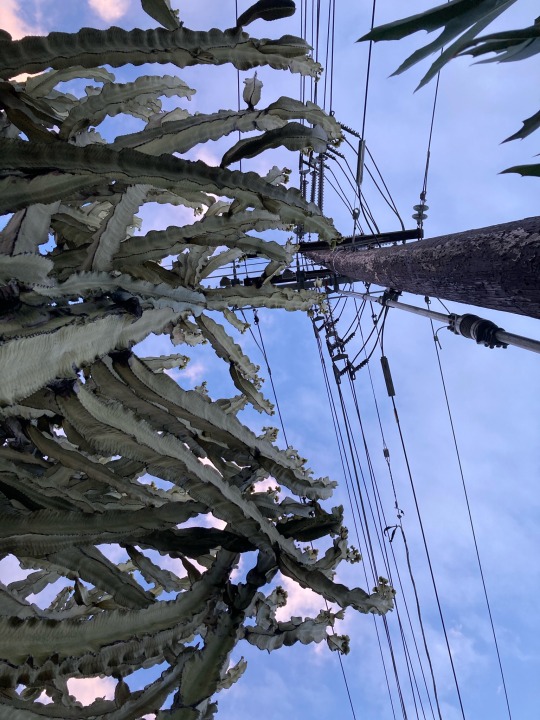
#tree euphorbia#candelabra tree#euphorbia ingens#succulents and cacti#succulent trees#toxic plants#powerlines#san diego
42 notes
·
View notes
Text
List of Toxic Plants, Foods, Household Items for Pets
42 Toxic Plants for Cats (RSPCA)
Toxic Plants for Dogs [Agriculture Victoria]
Household Items, Plants and Foods that are Dangerous to Dogs [RSPCA]
Poisonous Plants for Pets [Burke's Backyard]
Human Foods that are Toxic for Cats [RawzFoods]
Poisonous Plants for Animals (Cats, Dogs, Horses) - ASPCA
8 Foods Poisonous to your Horses [EquiSupermarket]
Toxic Plants for Horses [ASPCA]
Feel free to add your own links or diagrams, if you know of something that will help fellow pet owners keep their animals safe.
And remember, do not go feeding random horses random stuff, no matter how kindly intentioned the apple etc, it can cause horrifying issues and even death.
64 notes
·
View notes
Text

I was going through a list of flowers, and their symbolism with the intent of finding some info for future reference when I came upon the Belledonna.
Atropa belladonna, commonly known as belladonna or deadly nightshade, is a toxic perennial herbaceous plant in the nightshade family Solanaceae.
An alternative name for the belladonna according to a review on one of the sites I looked through was 'The assassin's drug' in past history, because it tastes sweet, and causes death.
Another review came up to say that Belladonnas help with fevers, and a third one said that the op had a cystoscopy on their left kidney, and the surgical notes stated that once the stone, and equipment were removed, a "Belladonna & Opium suppository" was administrated (B&O for short); they are common after kidney stone removal procedures because they help control what is essentially a painful post-op cramping of the urethra.
The name originates from it's historic use by women, as bella donna is Italian for 'beautiful woman'. It was used to dilate woman's pupils since it was considered to be attractive, and seductive.
In light of my short research, I assume that Dazai used this as a pet name for the women he invites to double suicides knowing all of this. A beautiful woman that agrees to a double suicide would be a deathly one, but her presence would bring comfort alongside the death to come.
It would make a funny pun for florists/plant enthusiasts (me)/pharmacists, and maybe even doctors out there who are exposed to Dazai's flirtatious pick up lines.
'Just being in the presence of your beauty makes my heart race, my dear Belladonna!'
'You should go see a doctor then, my chemistry would start affecting your digestive system pretty soon if you don't hurry lol'

#the reviews were pretty contrasting with article itself tbh#the article insisted that it was unsafe to use as a suppository but didn't elaborate that much#and that taking belladonnas as medicine is just a series of painful side effects and the such#but the reviews kept telling stories of how it saved their lives and made them much easier in their respective medical condition after#being prescribed with pills containing belladonnas#which could be a reference to how Society#and Kunikida#view suicide vs how Dazai views it#he views it as liberty and happiness#while they view it as a complete irreversible end which leads to terribly painful silence#saff-ron tag#bsd#writers on tumblr#bungou stray dogs#dazai osamu#bsd dazai#bsd analysis#bsd meta#bsd dazai osamu#dazai analysis#belladonna#plantblr#toxic plants#or are they?#i need confirmation frim an expert i love topics centered around flowers and plants
19 notes
·
View notes
Note
i was scrolling through the hemlock tag and saw your post; thus i ask, humbly, to hear everything you know about water hemlock (or poison hemlock, or both, if you prefer).
Ooo, I love that you were just casually exploring the Hemlock tag! I am a Wolf's Bane girl myself when it comes to toxic plants. BUT Hemlock, here we go!
It is part of the carrot family and (as is common in toxic plants) the entire plant itself is toxic but especially the roots and seeds.
I actually love Hemlock because it is so bold yet delicate. They can reach up to 8 feet tall, something about flowering plants that start from nothing but are taller than me in a single growing seasons gets me GOING (Fireweed is my favorite of these, though, not toxic, actually delicious). Anyways! The stems are thick but the leaves and clusters of blossoms are so lacey and elegant. Succubus plant.
Fun fact! At the end of the season, and Hemlock dies back, the stems are hollow and you can find them standing tall still, brown, and "woody." And it's a rite of passage growing up to chase each other with them, like sword fighting. Buuuuut don't do this 🙏 The toxins remain in the stems for several years.
Six to eight leaves is all it takes to have you dead. And as stated, seeds and roots hold the most toxins. I'm not a chemist, pharmacist, scientist in any way. I just like pretty deadly things. But it has a narcotic effect that will lead to paralysis of the respiratory muscles and you'll asphyxiate.
There is no antidote! So watch what you put in your mouth out there! I encourage everyone to try wild native flora, make tea, jelly, put some greens in salads, dry and grind for fancy salts, etc. But do your research 💚
THANK YOU FOR COMING TO MY TED TALK
#i am so thankful for you#i love to share plant facts#i am symbolically praising at your feet for your graciousness#hemlock#poison hemlock#toxic plants#do not eat#you could die#answered
11 notes
·
View notes
Text


This tea cup with foxgloves and poison hemlock I found second hand 😭🤌
Yes it most definitely came home with me!
158 notes
·
View notes
Text

Halloween Countdown Day 4
The curse of the Toxic Squash!
My 2023 pumpkin harvest includes Winter Luxury pumpkins, Patty Pan squash (Cucurbita pepo), Autumn Crown (C. moschata), Crown Prince, Candy Roaster, Hubbard, Ute, Turban, and Uchiki Kuri (all C. maxima).
A pumpkin patch is a wholesome Halloween sight, but there is evil lurking in the domain of squash… Toxic Squash Syndrome! Squash can develop unusually high concentrations of a naturally occurring toxin called cucurbitacin E. This toxin is a tetracyclic terpene whose smell and taste repel insect and mammal pests.
If humans consume too much cucurbitacin, they can suffer excruciating symptoms like diarrhoea, vomiting, and hair loss over a period of several days. Fortunately, it is easy to detect the toxin before consuming an unknown squash. Simply lick the raw squash pieces after the fruit is cut up. If they taste bitter, do not eat! It is important not to eat the bitter squash because poisoning can result from a small amount.
Wild squash species have higher cucurbitacin E levels than domesticated squash. The eldritch ornamental squash with bizarre shapes and patterns found in fall home décor were bred for looks rather than culinary use, so they have the wild squash genetics for high cucurbitacin E production. Other types of toxin-loaded squash and gourds, such as Calabash and Colocynths, are sometimes grown for ornamental use. People may consume these unusual squash due to ignorance, or experimentation with traditional medicinal uses of these species.
Toxic squash syndrome can be prevented by only eating squash from reputable sources, such as supermarkets and home vegetable gardens where there is no chance of cross pollination with wild squash species. The progeny of ornamental and edible squash may look like edible squash, but they contain the dangerously high levels of cucurbitacin E. If the only squash in the local vicinity are edible domesticated squash varieties, the seeds should be safe to save and grow for next year’s harvest. However, bitter squash can be caused by harsh environmental stress so always taste before cooking. Make sure your Halloween pumpkin soup and pie is a treat not a nasty trick!
#katia_plantscientist #pumpkinpatch #toxic #squash
#katia plant scientist#botany#plant biology#katia hougaard#plant science#plants#pumpkins#squash#winter squash#decorative squash#fall#fall aesthetic#autumn#fall vibes#autumn vibes#pumpkin patch#fall season#toxic#toxic plants#cucurbitacin#cucurbita#jack o lantern#plant genetics#purple dress#toxin#ornamental squash#food safety#plant facts#halloween#halloweencore
27 notes
·
View notes
Text
Everyone on my post about toxic invasive air potatoes vines in florida:
'Wow, it looks like ube, you can eat it! :D'
Me, typing fast : " they're in the same family and the leaves look the same, but this isn't ube and can be unsafe to eat for you and your pets'
Next comment: obviously you don't know what you're talking about, the leaves look like an ube plant'
Me: the leaves do look the same! but when the aerial tubers grow in they'll look very different to ube; these plants are poisonous, please don't eat them.
Next comment: ma'am that's an ube plant. I know cause I seen leaves once, and the leaves look like those leaves, and no plants in the world have similar leaves, so imma eat em
Me: Please. DONT. Eat. Them.
#i'm about to lose it y'all#invasive plants#gardening#air potato#florida gardens#florida farming#toxic plants#poisonous plants#dont eat random plants unless you really know for sure what they are.#florida native gardening#florida invasive plants#ube#not ube
6 notes
·
View notes
Text


#TOMMY👁️🐈👁️IMPORTANT JOB TODAY:
💛🌿*PLANTS INSPECTOR*🌿💛
@samirafee
#source: samirafee#own pictures#photographers on tumblr#my cat#tommy#important job today#plants inspector#my garden#arum italicum#italian arum#poisonous#toxic plants#june 2024
31 notes
·
View notes
Text
February 5
Today's flower is the deadly oleander! Scientific name Nerium Oleander
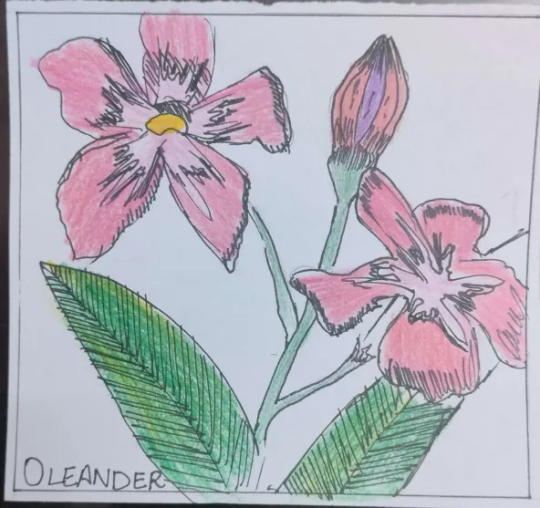
Oleander, scientifically known as Nerium oleander, is a flowering shrub that belongs to the dogbane family, Apocynaceae. Native to the Mediterranean region, oleander is widely cultivated for its attractive flowers and ornamental value.
In ancient times, oleander was highly regarded for its medicinal properties. The ancient Greeks and Romans used extracts from the plant to treat a wide range of ailments, including heart conditions, asthma, and epilepsy. The plant’s therapeutic value was also recognized in traditional Chinese medicine, where it was used to alleviate digestive issues and reduce inflammation.
oleander became a symbol of love and romance, often used to express affection and adoration.
However, oleander’s symbolic significance isn’t limited to positive connotations. In some cultures, the plant is associated with deception and betrayal.
Every part of the oleander plant contains toxic compounds, but some parts are more potent than others. Here are the parts of the plant that pose the greatest risk:
Leaves: The leaves of the oleander plant contain cardiac glycosides, which are toxic to the heart. These compounds interfere with the normal pumping of the heart, leading to irregular heart rhythms and potentially fatal consequences if ingested.
Stems: The stems of the oleander plant also contain cardiac glycosides, although in lower concentrations compared to the leaves. While the stems may not be as toxic as the leaves, they should still be handled with caution to avoid any potential adverse effects.
Flowers: Surprisingly, even the beautiful flowers of the oleander plant are toxic. They contain the same cardiac glycosides as the leaves and stems, making them equally dangerous if ingested.
Seeds: The seeds of the oleander plant are highly toxic and should be avoided at all costs. Ingesting the seeds can lead to severe poisoning and even death.
source: garvillo.com/meaning-of-oleander/
#art#illustration#a flower often#flower#flowers#oleander#february 5#ill try to cite my sources from now too#just cause#polls#murder polls#toxic plants#toxic flowers
17 notes
·
View notes